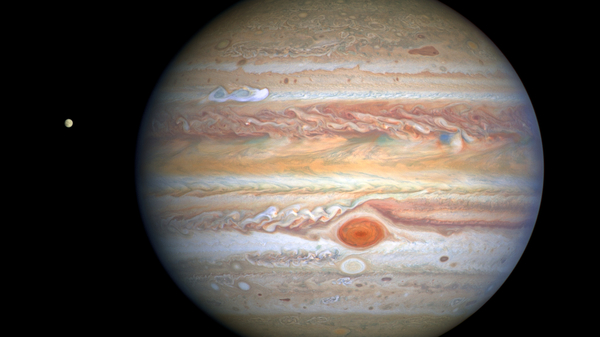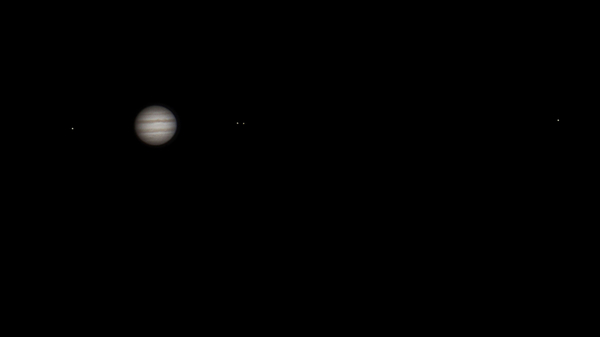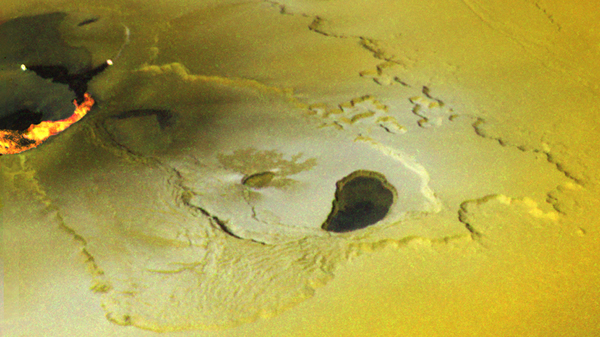Jupiter: The Massive Planet
Jupiter is two-and-a-half times more massive than all the other planets in the solar system put together.

Jupiter poses with its Great Red Spot, and its icy moon Europa.
©NASA, ESA, STScI, A. Simon (Goddard Space Flight Center), M.H. Wong (University of California, Berkeley), and the OPAL team
The Crescent Moon, Saturn & Venus align in January 2025
A Brief Overview of Jupiter
The fifth planet from the Sun, Jupiter is the largest planet in the solar system. It has about 318 times the mass of Earth, and around 1320 times the volume. Jupiter is made mostly of hydrogen and helium, similar to the Sun, and is known as a gas giant.
Compare the sizes and order of the planets
The planet is covered in colorful swirling clouds of ammonia, water, and other chemicals. A prominent feature is the Great Red Spot, a storm that is bigger than Earth and hundreds of years old.
Where Is Jupiter in the Sky?
Find and track Jupiter with our Interactive Night Sky Map
Check the weather in your town or city
When Is the Best Time to See Jupiter?
After the Sun, the Moon, and Venus, Jupiter is the fourth brightest object in the sky—although, occasionally, Mars can outshine it. When Jupiter is at opposition, it lies directly opposite the Sun in our sky and is visible all night. At solar conjunction, the planet passes behind the Sun and cannot be seen from Earth for a few weeks. Jupiter reaches opposition every 399 days or so (about 13 months).
Jupiter can easily be enjoyed with the naked eye. A reasonably good pair of binoculars will reveal the planet’s four large moons discovered by Galileo in 1610.
Next solar conjunction: June 24, 2025
Next opposition: January 10, 2026
Previous opposition: December 7, 2024
Previous solar conjunction: May 18, 2024
How far is Jupiter from Earth right now?

Through binoculars or a small telescope, Jupiter’s Galilean moons appear as four tiny points of light. They can be seen shifting their positions over the course of a night.
©iStockphoto.com/Allexxandar
How Long Is a Day and a Year?
Jupiter is the solar system’s fastest spinner and has the shortest solar day. The giant planet rotates on its axis about once every ten hours.
Its tropical year is about 4331 Earth days, which is a little under 12 Earth years.
How Many Moons Does Jupiter Have?
The massive planet has around 100 known natural satellites.
The four moons discovered by Galileo are called the Galilean moons. From largest to smallest, they are Ganymede (about one-and-a-half times the size of Earth’s Moon), Callisto, Io, and Europa (slightly smaller than Earth’s Moon).
The next-largest moon of Jupiter, Amalthea, is irregularly shaped and only a fraction of the size (about one-nineteenth) of Europa.
In addition to its moons, Jupiter has a ring system. Whereas Saturn’s rings are made of shiny ice particles, Jupiter’s are made of faint dust.

Io is the most geologically active body in the solar system. The New Horizons spacecraft took this close-up of lava spilling onto the moon’s surface in March 2007.
©NASA/JPL/University of Arizona
Human Exploration of Jupiter
Jupiter played an important role in the scientific revolution of the 16th and 17th centuries. According to the old Aristotelian model of the universe, everything circled the Earth. The discovery of the Galilean moons orbiting Jupiter proved that something was wrong with Aristotle’s model.
The first spacecraft to visit Jupiter was Pioneer 10, which made its closest approach on December 4, 1973.
On December 7, 1995, the Galileo spacecraft became the first to go into orbit around Jupiter. Before its fuel was completely used up, Galileo was deliberately crashed into the planet on September 21, 2003. This was done to prevent any possibility of a contamination-causing collision with one of Jupiter’s moons, which could potentially be home to some form of extraterrestrial life.
How Long Does It Take to Get to Jupiter?
As with all space travel, the journey time to Jupiter depends partly on how much fuel is used. Pioneer 10 made the trip in 21 months. New Horizons—the fastest spacecraft ever to leave Earth’s atmosphere—took just 13 months to reach Jupiter on its way to Pluto.
Galileo, on the other hand, did not have enough fuel to fly directly to Jupiter. So it made one flyby of Venus, and two flybys of Earth on its way. These gravity assist maneuvers enabled the spacecraft to gain speed.
Pioneer 10
- Launched: March 3, 1972
- Arrived: December 4, 1973 (flyby, closest approach)
- Journey time: 1 year, 9 months, and 1 day
Galileo
- Launched: October 18, 1989 (aboard Space Shuttle Atlantis)
- Arrived: December 8, 1995 (entered orbit)
- Journey time: 6 years, 1 month, and 20 days
New Horizons
- Launched: January 19, 2006
- Arrived: February 28, 2007 (flyby, closest approach)
- Journey time: 1 year, 1 month, and 9 days
All dates are shown in UTC.